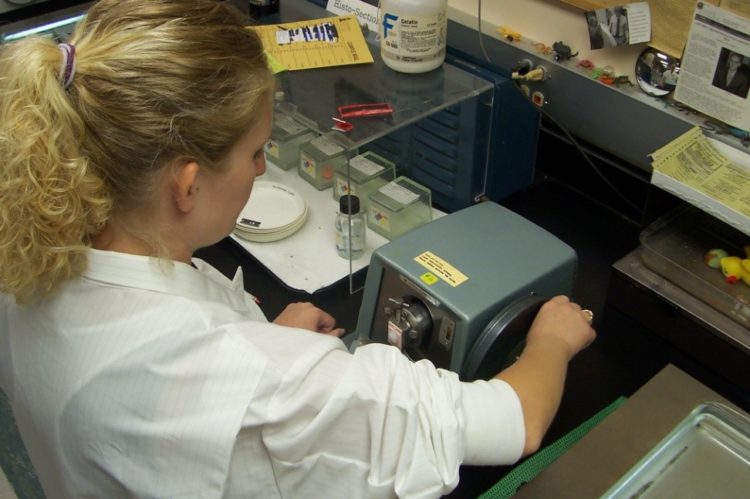Histology Laboratory Ergonomics
Ergonomics is the science of designing the job, equipment, and workplace to fit the worker. Why should the Histotechnologist be concerned about laboratory ergonomics? As Histotechnologists we perform daily tasks that are precise, repetitive, and in a fast-paced manner. Work-related musculoskeletal disorders currently account for one-third of all occupational injuries and illnesses reported to the Bureau of Labor Statistics (BLS) by employers every year. When a movement is done repeatedly such as while using a manual microtome or the “pinch grip” used with forceps during the embedding process, a stress injury can form. These small injuries build up over time and can develop into Musculoskeletal Disorders (MSD). Most frequently these injuries affect the back, neck, shoulders, and upper limbs; less frequently the lower limbs. There are ways to improve the ergonomics of your workspace without spending too much money. This discussion will be focused on arm related issues in the hand and shoulder.
Ergonomic Risk Area- Manual Microtome
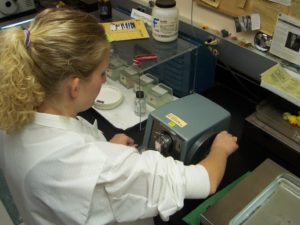
- When sitting or standing keep arms close to the body while cutting
- No “wings” with the elbow
- Maintain neutral position of the shoulder
- More than a 30 degree angle of the shoulder away from the body and the deltoid will fatigue quickly
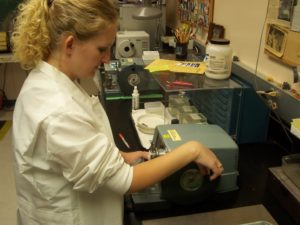
- Angled wrists while cutting are a no-no
- Keep the wrist in a straight neutral position to reduce arm fatigue
Ergonomic Risk Area- Forceps Pinch Grip

-Ergonomic design has the widest gripping area balanced in the center of the tool
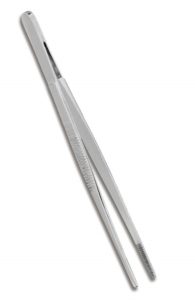
-Standard design
While not everyone can afford to purchase specially designed ergonomic tools there are modifications that can be made to existing tools.
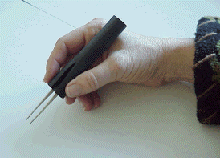
This photo from the UC Berkley Tang Center shows a great way to improve the “pinch grip” of forceps by using inexpensive plastic-coated foam tubing. This tubing can be found in many hobby or craft stores and it comes in a multitude of sizes. By using either specially designed tools or simple modifications to existing tools the ergonomics of your workplace can be improved and the risk of injury reduced.

